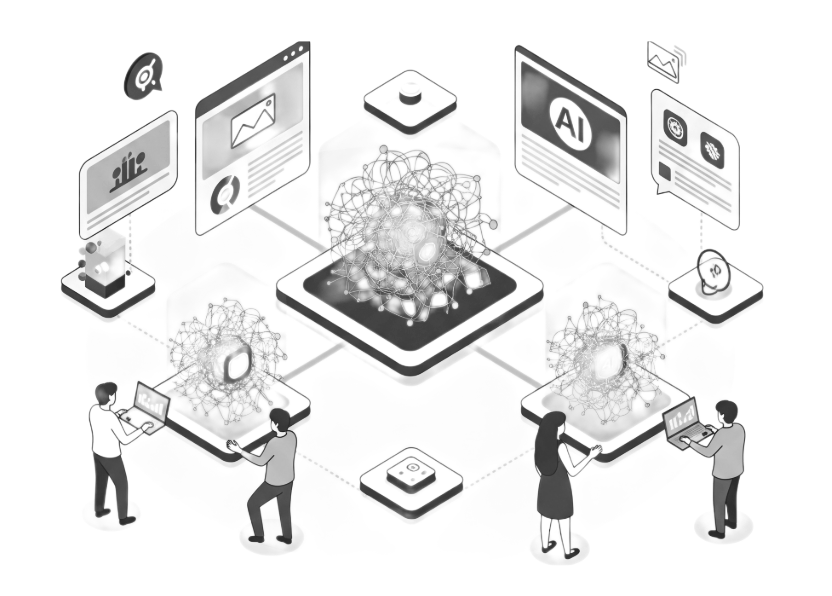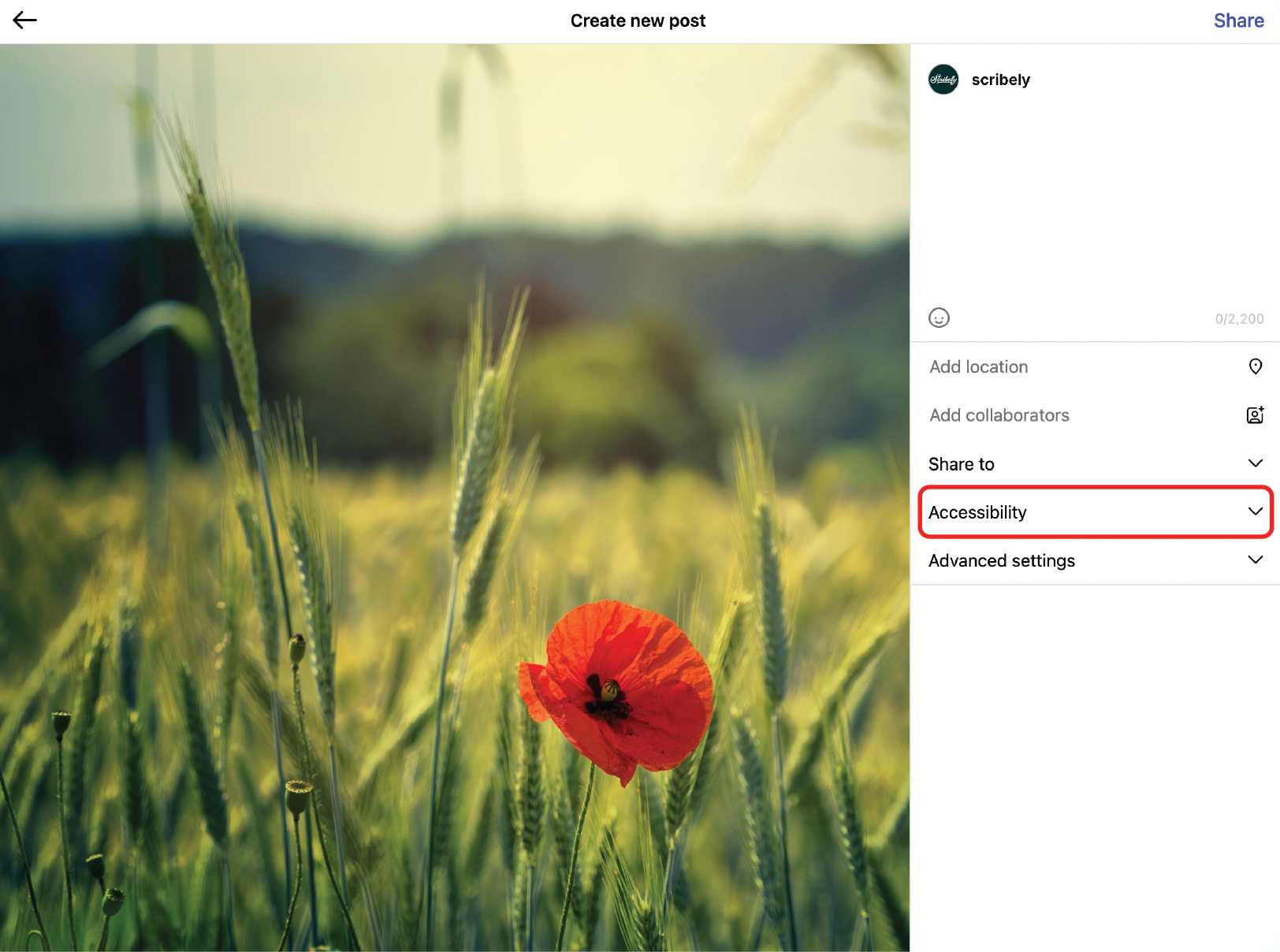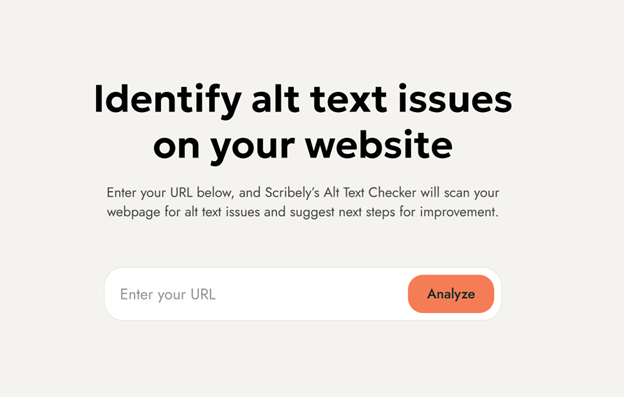Introduction
Do you use GIFs? Who are we kidding, of course you do! Most of us use them daily or close to it, in work conversations, text messages, emails, and on social media. Because they can convey emotions, ideas, and humor in a way that words and static images often can’t, we adopted them into our vernacular so quickly and seamlessly that we don’t even think about it.
Note: This is a recap of our presentation at AccessU 2023.
GIFs are an important and fun part of our daily lives. They move us to moments of joy and happiness and have become a part of the way we communicate. We even reference them in our spoken conversations!
Yet did you know that, currently, GIFs exclude millions of people from the conversation? That’s because most GIFs don’t have alt text, are not contextually descriptive, or lack a written description of what’s happening in them. So for people with varying disabilities, it’s as if what’s in the GIF is redacted or blacked out, leaving them clueless as to what it contains. And there are billions of GIFs!
But friends don’t let friends miss out on internet GIFs. That’s why we teamed up with GIPHY to create a sustainable approach to delivering alt text at the speed of conversation. Keep reading to learn how we described some of the most popular GIFs on the internet today, and how you can be part of making these important bits of internet culture more inclusive for everyone.
Why Making Internet Culture Inclusive and Accessible Matters
Picture this: You and your colleagues have been bantering back and forth when someone tells a joke. Right as they get to the punchline, a loud noise happens and you can’t hear it.
Everyone explodes with laughter, then continues building on the joke for quite some time. It seems you’re the only one who didn’t hear it, and when they reference it a few days later at the company party, you’re still completely out of the loop…until a kind coworker notices your bewilderment and explains the punchline.
For people who use assistive technology (AT), this experience happens all the time on the Internet. In this particular case, the GIF is the punchline and the alt text is the kind coworker.
This happens because AT like screen readers and refreshable braille displays are programmed to read what’s contained in the img <alt> attribute in the HTML code. But if <alt> is empty, AT simply alerts the user that a GIF is present, then moves on without describing the GIF. Talk about a terrible experience!
Every now and then, though, a GIF does have alt text, but it lacks the nuance and details that would actually convey the emotion or sentiment of the GIF. To be fair, writing descriptive alt text is hard! That’s why it’s important to bring the experts in.
To be accessible, GIFs need alt text, and that starts at the source, meaning GIF providers like GIPHY. And bonus! When the alt text is actually good, meaning human-generated and reviewed for quality and content, people who use the GIFs can quickly review the alt text and share their GIF with confidence.
How GIPHY Prepped its Platform for Alt Text
The ultimate priority for GIPHY was to first identify the content they would prioritize for alt text, which included top results for some of the most popular searches on GIPHY.
From there, they could then tackle how to turn the data they did have on their GIFs into descriptions. Metadata is data about the file itself, and each GIF on GIPHY contains metadata like tags and titles that give context to the image. GIPHY provided that data to Scribely to aid in composing descriptions. In addition, with such large numbers of GIFs, they had to create a system that would allow them to quickly and accurately import alt text once received and ensure that it was in the proper fields on the front end. Finally, it all came down to testing, testing, testing to ensure a seamless and enjoyable experience for AT users.
Scribely’s Approach and Methodology for Delivering Human Descriptions at Scale
What does it take to write alt text that is equivalent to the sighted experience of GIFs? GIFs are highly nuanced, even though we process that nuance in a matter of seconds. When we experience GIFs, we utilize a sense of humor, empathy, knowledge of pop culture, the ability to contextualize, comedic timing, and so on. All of these need to be captured in the alt text in order to deliver a similar experience.
In addition to following Scribely’s proven method for writing alt text that delights and spreads joy (previously detailed in our article about alt text for smart SVGs), we:
1. Assembled writing and quality assurance (QA) teams with the right stuff
- The alt text writers needed knowledge of accessibility, pop culture appreciation, creative writing experience, ability to research efficiently, ability to write succinctly, a sense of humor, and empathy.
- The QA team needed to be exceptional at spelling, grammar, and syntax, as well as have experience with Scribely’s style and tone and have a genuine interest in fact-checking tags and references.
2. Created procedures and guidelines to maintain high standards
- A detailed writing guide about how to describe GIFs specifically.
- A list of the most common GIF IDs and a call to add more as needed.
- Alt text samples that provided examples of format and style.
- Permission for writers to skip unknown references and challenging GIFs so as to not get stuck.
- Open communication between the writing and project management teams.
- QA review and feedback so writers could incorporate notes and edits moving forward.
3. Planned for effective time management to preserve quality and prevent writer burnout
- Phased Approach. The project was divided into three phases so Scribely could batch deliver alt text to GIPHY at a steady pace.
- Weekly Quotas. Writers and QA team maintained weekly quotas to balance the flow and prevent burnout.
- Filtered Tags. We filtered the list by reference tags to find GIFs that played to different writers’ strengths (e.g. reality TV, movies, anime).
4. Created a process for researching super obscure pop culture references
- Titles and Tags (SEO terms provided by the creators).
- Related GIFs (finding GIFs with the same tags in GIPHY’s system).
- Visual Search (looking for similar images on Google).
Making Our Wildest Alt Text Dreams Come True
Now that we’ve tested the process, both GIPHY and Scribely are ready to dream bigger! 10,000 GIFs is just a drop in the ever-expanding GIF ocean, so it’s time to expand. We hope to have more API integrations (Instagram Comments is already live!), as well as to continue to describe more and more of the most popular GIFs. We also want alt text writers to get credit through alt text attribution, and GIPHY's product plan is to empower content providers with the ability to add their own alt text while leveraging Scribely’s team for quality control and moderation.
In addition, we hope to run a pilot project that tests embedding alt text in a GIF’s metadata so that it travels with the file everywhere, including places like Microsoft, Google, and Apple workplace programs. And above all, we want to incorporate assistive technology users into product development and testing to ensure that our work continues to make the internet more accessible for everyone.

Check out Scribely's 2024 eCommerce Report
Gain valuable insights into the state of accessibility for online shoppers and discover untapped potential for your business.
Read the ReportCite this Post
If you found this guide helpful, feel free to share it with your team or link back to this page to help others understand the importance of website accessibility.












.jpg)





.jpg)


























_edited_6x4-p-1080.jpeg)


